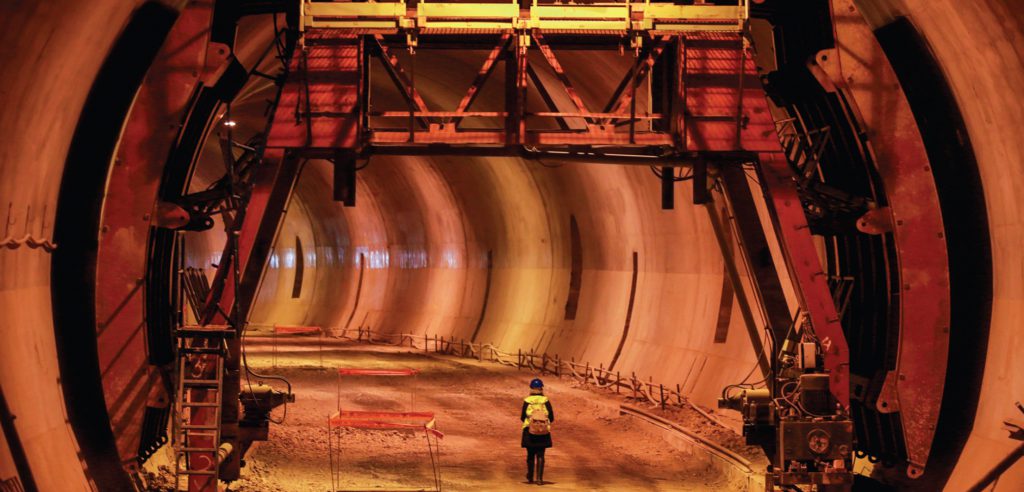High-Altitude Construction: Overcoming Challenges with Advanced Engineering Techniques & Solutions
Sonal Kumar
Sep 03, 2024

Civil engineering is the backbone of construction and infrastructure development, yet India’s advancements in this field often go unrecognized, overshadowed by the country’s global reputation in IT and pharmaceuticals. However, the nation’s civil engineering achievements, particularly in the challenging terrains of the North and Northeast Himalayan regions, are remarkable.
These border areas present formidable challenges, from rugged landscapes to extreme weather conditions, including heavy snowfall that can obstruct roads for prolonged periods. The scarcity of local construction resources further complicates these already demanding projects. Here’s how innovative engineering techniques are addressing these challenges:
Key Challenges and Solutions:
- Extreme Weather: High-altitude areas experience severe weather, including heavy snowfall, freezing temperatures, and strong winds, which can disrupt construction and compromise structural integrity.
- Innovative Solutions: Engineers are employing advanced materials and construction techniques to enhance resilience against these harsh conditions. For instance, the use of Cementitious Bases reduces carbon footprints while providing durability. Structures are also designed with aerodynamic shapes to minimize wind resistance, and snow galleries are integrated to manage heavy snowfall and prevent avalanches.
- Remote Locations: Accessibility is a major challenge in high-altitude regions, complicating the transportation of materials, equipment, and personnel.
- Modular Construction: This technique allows prefabricated components to be manufactured off-site and then transported to remote locations, significantly reducing logistical challenges. Drones are also increasingly utilized for surveying and monitoring, enabling efficient project management in these inaccessible areas.
- Geotechnical Challenges: The rugged terrain, unstable rock formations, and the risk of landslides present significant geotechnical challenges.
- Advanced Geotechnical Engineering: Techniques such as micro-piling and slope stabilization using innovative materials like geosynthetic membranes are employed to enhance stability and prevent landslides. Soil stabilization methods are also crucial in enhancing the ground’s load-bearing capacity, and preventing structural failures.
- Seismic Activity: High-altitude regions are prone to seismic activity, necessitating earthquake-resistant designs.
- Seismic Design Principles: Engineers are incorporating advanced seismic design principles, including base isolation and energy dissipation systems, to ensure structures can withstand seismic loads. The use of flexible materials allows buildings to absorb and dissipate seismic energy, minimizing damage during earthquakes.
- Limited Local Resources: The scarcity of local construction materials and skilled labor can hinder project progress.
- Sustainable Material Use: Engineers are sourcing sustainable materials, such as recycled aggregates, to reduce dependency on local resources and minimize environmental impact. Training programs are also being implemented to equip local labor with the necessary skills, ensuring that projects can proceed without delays.
Case Studies:
- Atal Tunnel: The 9.02 km long Atal Tunnel, the world’s longest tunnel above 10,000 feet, exemplifies how advanced technologies like 3D scanning, Building Information Modeling (BIM), and tunnel boring machines can overcome the challenges of high-altitude construction.
- Himalayan Hydropower Projects: Numerous hydropower projects in the Himalayas have employed innovative technologies such as drone surveys, real-time monitoring systems, and seismic design, ensuring safety and efficiency in these critical infrastructure developments.
Conclusion:
India’s high-altitude construction sector is a testament to the ingenuity and adaptability of its engineers. By embracing modern technology and sustainable practices, these professionals are overcoming formidable challenges, ensuring that infrastructure development in the Himalayas is not only possible but also resilient and sustainable.
To explore the transformative potential of digital technologies in high-altitude construction, and other sectors such as Roads and Highways, Railways and Metros, and Water Utility Infrastructure, the AEC Forum will serve as a crucial platform. This conference will gather industry leaders, policymakers, researchers, and technology experts for keynote speeches, panel discussions, technical sessions, case studies, and workshops. It will be an unparalleled opportunity for knowledge sharing, collaboration, and fostering innovation within the AEC sector.